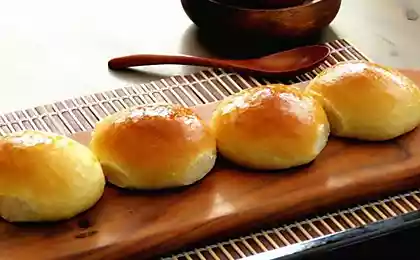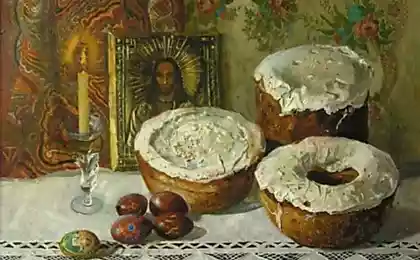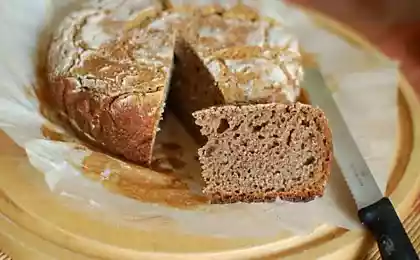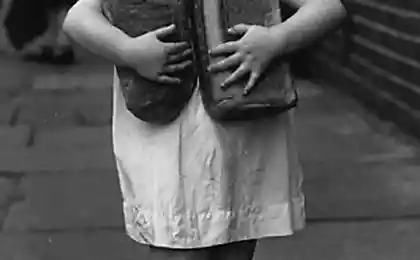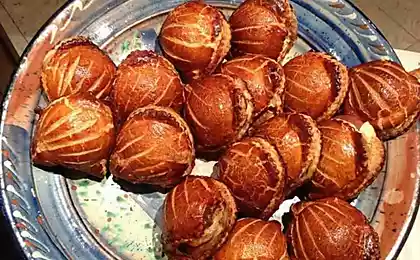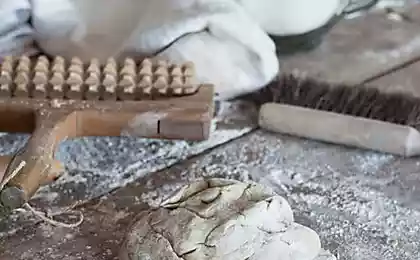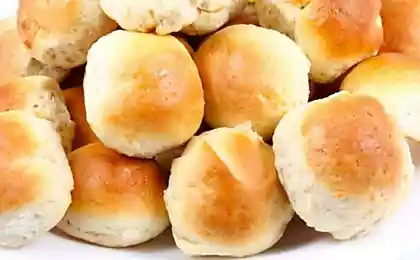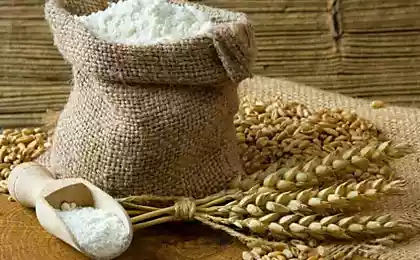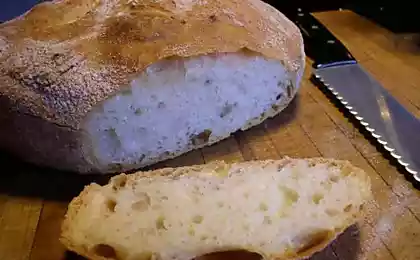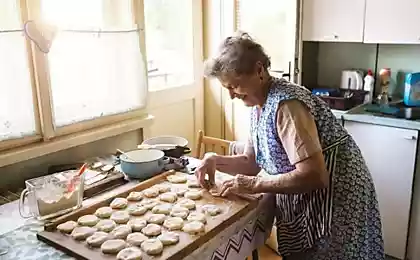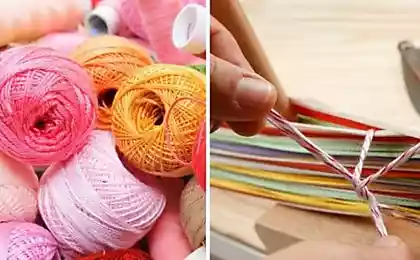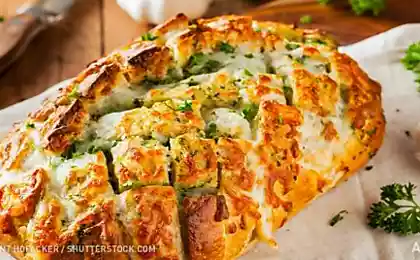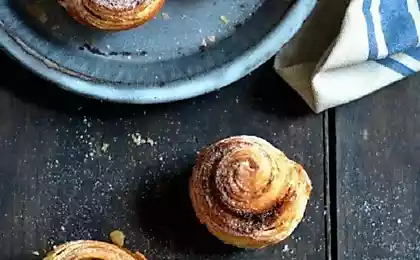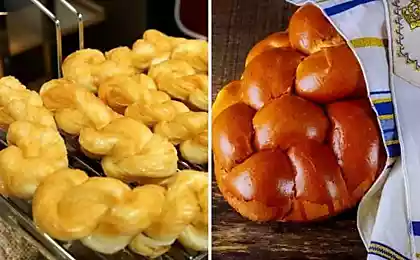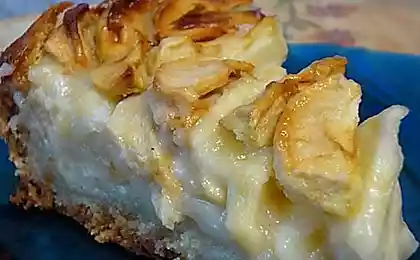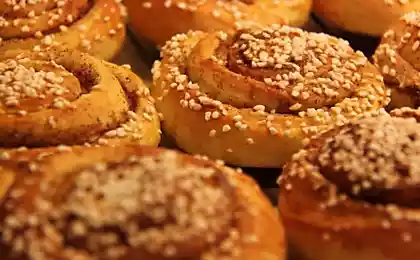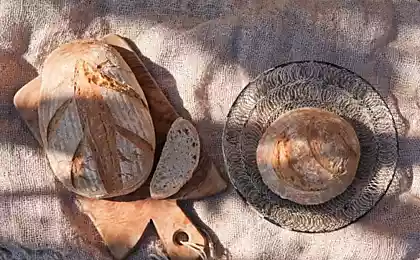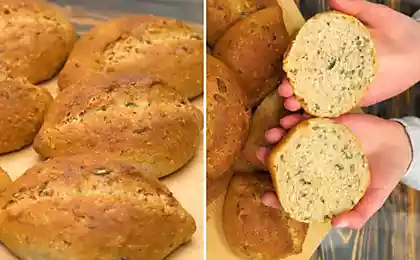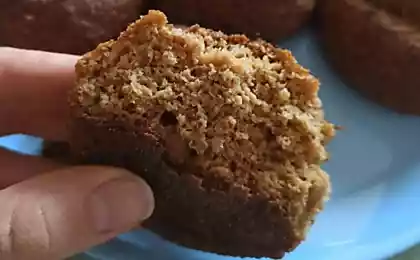246
Mastery of weaving luxury buns and how to master it
Diligent hostess always wants to develop and conquer new culinary heights. However, many of them have difficulty baking. That's why the editorial board "Site" They will tell you how to make a dough. Even beginners can do it!
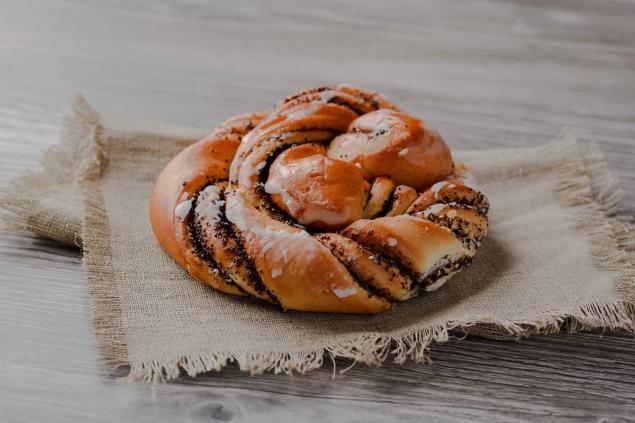
Today we share with you 10 unusual, but very easy to perform weaving techniques. Inspiration became YouTube channel called "Vanilla and Chocolate". There you can find many recipes of delicious pastries of stunning beauty.
For making buns, we offer you two different dough recipes. Dough #1 is good yeast. It is perfect for buns weighing 100-200 g. Air dough No. 2 is suitable for both small buns and weaves weighing 400-800 g. Choose any recipe at your discretion and start creating ruddy masterpieces!
Ingredients for test number 1
Ingredients for Test No. 2
After kneading the dough, leave it to wander for 1.5 hours. To make the dough smooth and airy, it can be mixed and allowed to approach 2 more times. The buns should be smeared with an egg and left to rise for another 45 minutes. Before you send them to the oven, grease them with an egg again. Bake products for 5 minutes at a temperature of 220 °C or 20 minutes at 180 °C. Also, remember that you can add to the buns filling to your taste before weaving.
10 Weaving Options
Video Instructions Here's the Promised manual. In this video you can watch the process of creating delicious buns.
https://www.youtube.com/watch? v=XDQ9dWrqnQ0
As you can see, creating such wicker buns is much easier than it might seem at first glance. Arm yourself with the above technique and Surprise your loved ones and guests at home with amazing pastries. Bon appetit!

Today we share with you 10 unusual, but very easy to perform weaving techniques. Inspiration became YouTube channel called "Vanilla and Chocolate". There you can find many recipes of delicious pastries of stunning beauty.
For making buns, we offer you two different dough recipes. Dough #1 is good yeast. It is perfect for buns weighing 100-200 g. Air dough No. 2 is suitable for both small buns and weaves weighing 400-800 g. Choose any recipe at your discretion and start creating ruddy masterpieces!
Ingredients for test number 1
- 125g milk
- 20g pressed yeast
- 125g butter
- 2g salt
- 125g sugar
- 2 egg yolks
- 450g wheat flour
Ingredients for Test No. 2
- 250g milk
- 15g pressed yeast
- 30g sugar
- 1 egg
- 30g butter
- 2g salt
- 440g wheat flour
After kneading the dough, leave it to wander for 1.5 hours. To make the dough smooth and airy, it can be mixed and allowed to approach 2 more times. The buns should be smeared with an egg and left to rise for another 45 minutes. Before you send them to the oven, grease them with an egg again. Bake products for 5 minutes at a temperature of 220 °C or 20 minutes at 180 °C. Also, remember that you can add to the buns filling to your taste before weaving.
10 Weaving Options
- "Rose." For a bun in the form of a rose, you need to divide 400 g of dough into 4 identical parts. Then we make tubes from each piece. We arrange two tubes cross, weaving them together, as in the photo below. After a few simple movements, the dough turns into a beautiful flower.
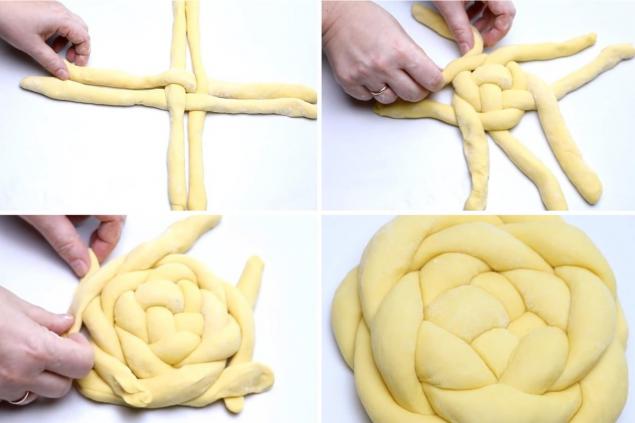
- "Ball." Now divide 400 g of dough into 6 equal pieces. From these we also form tubes. We fold three tubes across and form our ball.
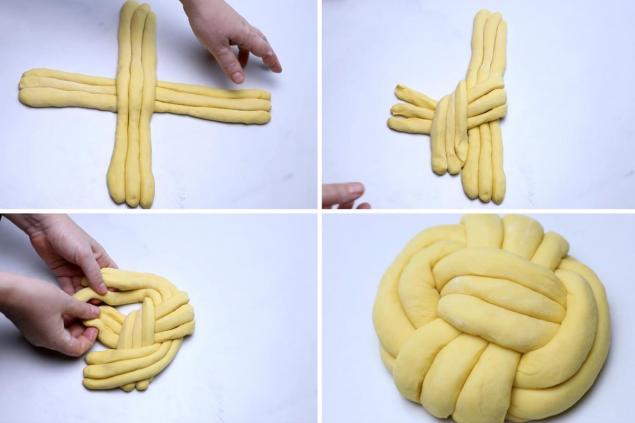
- "Flower." Another way to weave dough with a floral motif. To do this, divide 300 g of dough into 3 parts and make tubes from them. Next, we just braid the pigtail, and then twist it into a round bun. Who would have thought that such beauty was so easy?
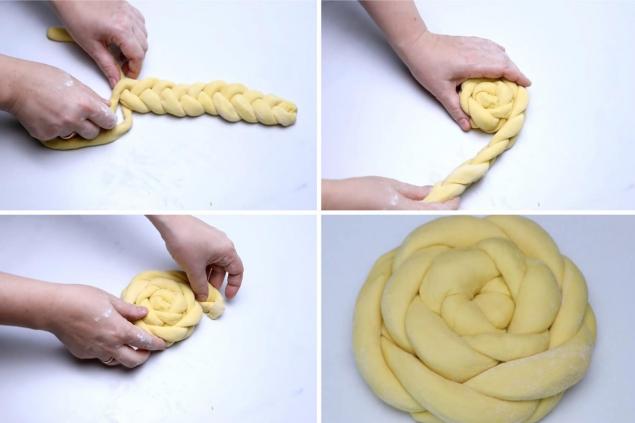
- "Tangle of threads" To make such a glomerulus, take 200 g of yeast dough and carefully roll it with a roller. Then make incisions around the perimeter of the dough without reaching the edge. We twist everything into a tube, forming a ball.
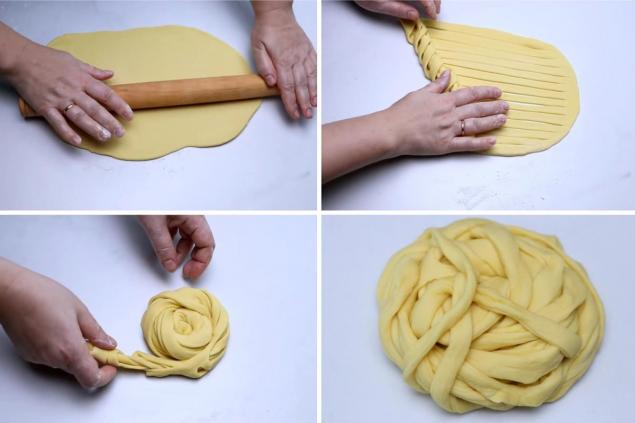
- "Yin-Yang." Such an original bun requires 200g dough and a bit of sleight of hand. Divide the dough into 2 equal parts and roll them out. Then twist 2 tubes so that the edges of each of them were thinner in diameter than in the center. We fold the tubes in half and scroll them, as shown in the photo. It remains only to combine the two parts of the future baking so that the famous symbol of infinity is formed.
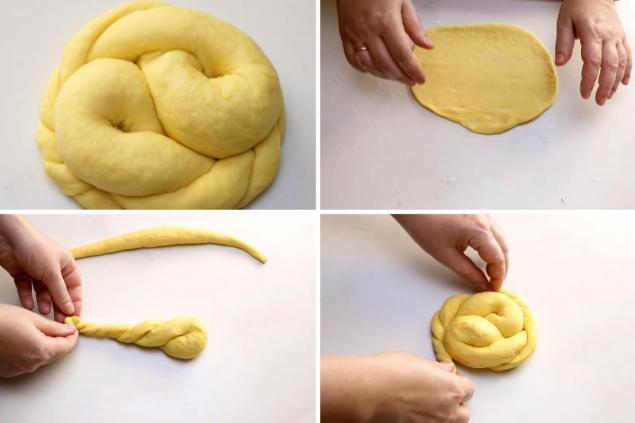
- "Curl" You can see the pattern of this and the next buns. video. For such a curl, you will need 200 g of dough. Roll it with a roller, form a tube, and it's a bun.
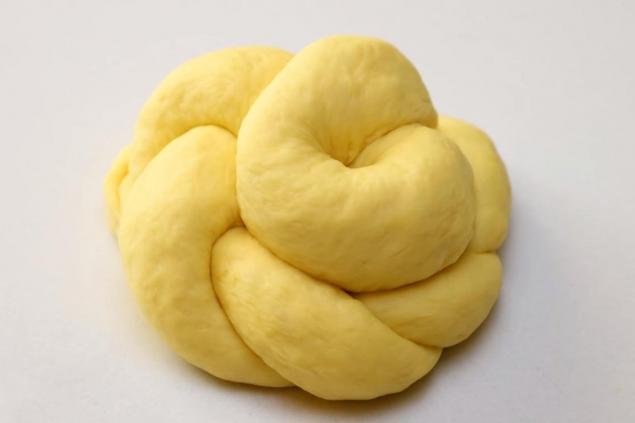
- "Meander." For each meander bun you need 100 g of air test. We roll it, cut it into strips with a knife, and we twist a tube out of it. With its help and create such a bizarre pattern.
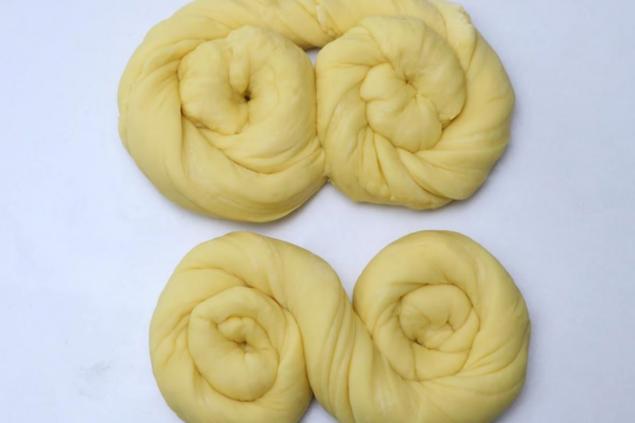
- "Twisted meander" As in the previous weave, we will need 100 g of dough for each product. In this case, we make 2 tubes, twist them and form the original twisted meander.

- Snail. Such a bun can be made from only 100 g of dough. We roll it out, cut it into strips and slightly connect them, turning it into a tube. Gradually twist it in a circle and get a bun, which is very similar to the "house" of a snail.
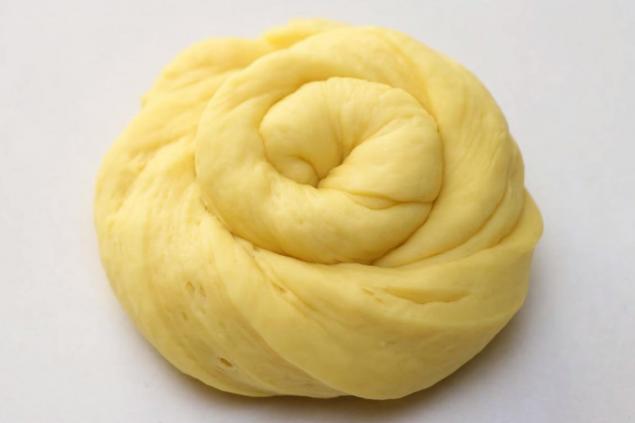
- "The Knot." From 100-150 g of air or milky yeast dough, we get 1 bun. We roll a portion of the dough into one tube and weave a spectacular nodule out of it.
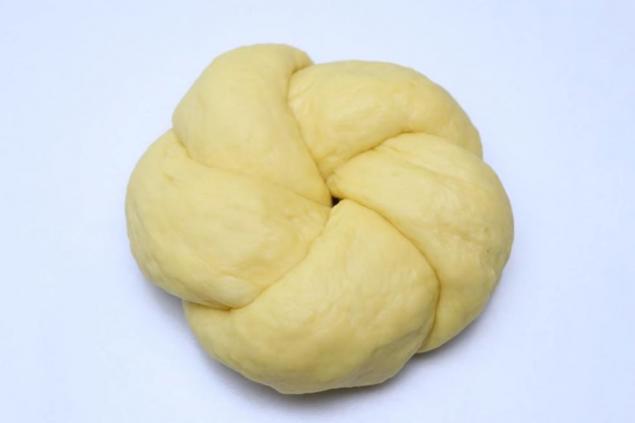
Video Instructions Here's the Promised manual. In this video you can watch the process of creating delicious buns.
https://www.youtube.com/watch? v=XDQ9dWrqnQ0
As you can see, creating such wicker buns is much easier than it might seem at first glance. Arm yourself with the above technique and Surprise your loved ones and guests at home with amazing pastries. Bon appetit!
Office after quarantine according to the rules of Dr. Komarovsky
Menu for truckers with detailed recipes










